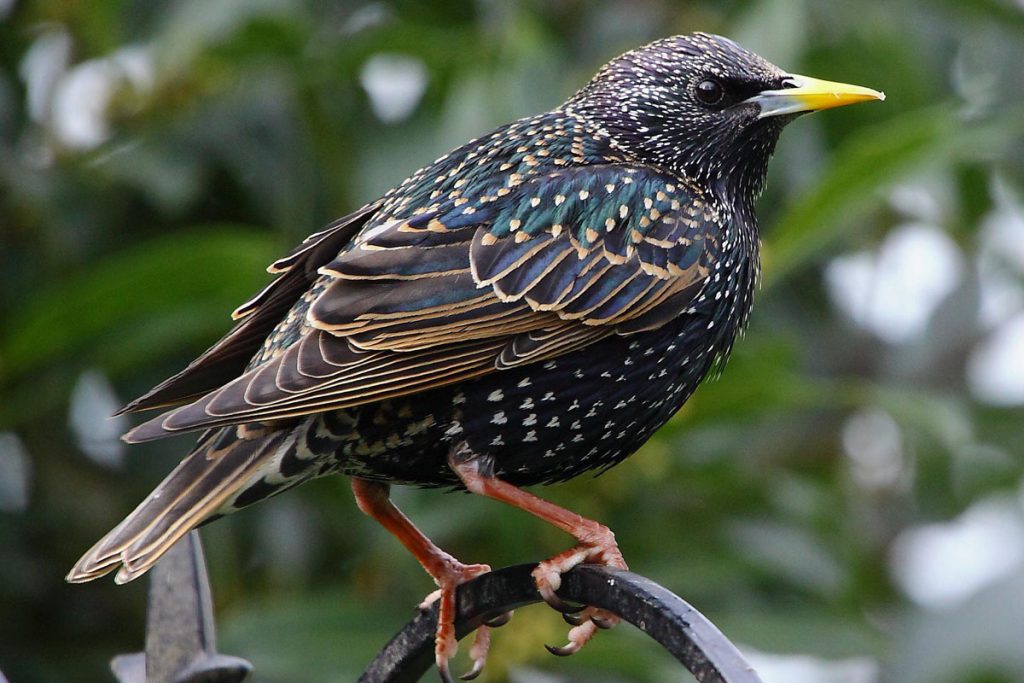
Eugene Schieffelin meant well. All he wanted to do was honor his favorite playwright.
The German-born immigrant – and Shakespeare obsessive – yearned to introduce to America all the birds mentioned in the Bard’s plays.
At great personal expense, he imported hundreds of breeding pairs of non-native species and released them in New York City’s Central Park. No one was really surprised that most of them, including skylarks, lapwings, popinjays, and parakeets, vanished within a single generation.
Unfortunately, one of the alien species looked around and said, “This will do quite nicely, thank you.”
On the brisk morning of March 6, 1890, Schieffelin and his servants released 60 European starlings. A year later they added 40 more. By 1940, starlings were spotted near the Mississippi River. Today they can be found from coast to coast, Alaska to Mexico. Ornithologists estimate their population at around 200 million.
Even if you’re a bird lover, it’s not easy to love starlings. Short, stubby, and freckled with yellowish spots, they aren’t particularly photogenic. Michael Begier, a bird expert with the USDA, says, “Starlings are lean and mean. In the industry they’re often called feathered bullets.”
Starlings are a bit like human teenagers. They eat anything within reach. An average starling will consume one to two times its body weight every day. They are annually responsible for something like $800 million of crop damage.
Birds of a feather flock together, and starlings have been known to congregate in groups of tens of thousands. Such gatherings have been given the wonderfully descriptive name “murmurations.” As you might guess, music lovers have never gone out of their way to record their unmelodic squawks. In such large groups, starlings tend to drive away much-beloved native species like woodpeckers, flickers, and bluebirds.
They have been known to carry a variety of diseases and have brought down at least one commercial airliner.
Unsurprisingly, the starling is almost universally regarded as a “nuisance bird,” and is one of the only species in America not protected by law.
Here’s the irony: Shakespeare only mentions starlings once. In Act I, Scene 3, of Henry IV, a soldier is ordered by the king never to mention his brother-in-law Mortimer’s name again. The soldier dreams of buying a starling that will speak the name constantly: “Nay, I’ll have a starling shall be taught to speak; nothing but ‘Mortimer,’ and give it to him.” We should note that starlings, which are related to myna birds, are extraordinary mimics, and can even imitate car alarms.
If only Shakespeare had never written that line. Or if only Eugene Schieffelin had taken up stamp collecting instead of bird-importing.
April 22 is Earth Day, the largest annual secular observance in the world. It’s estimated that at least one billion people will be more mindful of environmental issues today.
It may be painful to revisit the accounts of invasive species linked to poor human choices, such as rabbits overrunning Australia, Burmese pythons invading the Everglades, and kudzu spreading all over the American South. But it’s wise to learn from the past. From humanity’s beginning in the book of Genesis, our call has been to steward God’s creation. Part of that stewardship is growing in our understanding of the fragility of Earth’s ecosystems, and learning not to be cavalier about God’s creatures.
And there’s one other thing.
It would be good to cultivate some love for the European starling.
Those drab-looking black birds, after all, are divine creations. It wasn’t their choice to take a transatlantic cruise in 1890 and be thrust into an environment where their numbers would explode.
“Yes, but they’re annoying pests.” Does that mean we should judge living things on the basis of whether they make us feel happy or sad?
Jesus instructs us to “look around you at the birds of the sky; they don’t sow, they don’t harvest, and they don’t even put things aside for safekeeping, and still your heavenly Father feeds them.” (Matthew 6:26) We may assume those words take starlings into account.
Birds are among the most active and busy of all God’s creatures. Yet they never worry.
Perhaps on this Earth Day, as we notice the birds working feverishly to prepare their spring nests, we can let them be our teachers.
Even those starlings that we haven’t given a second look for a very long time.
